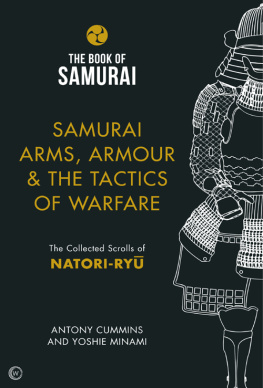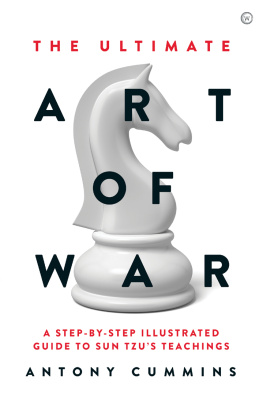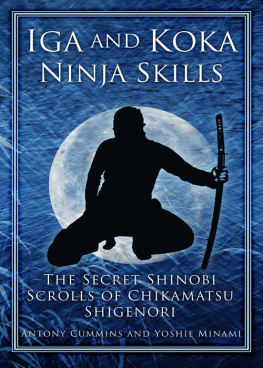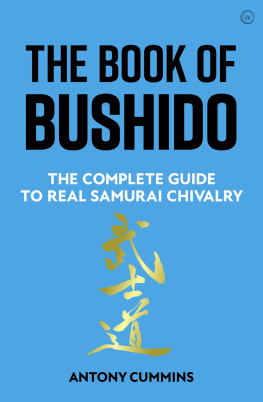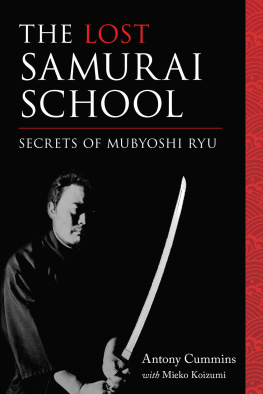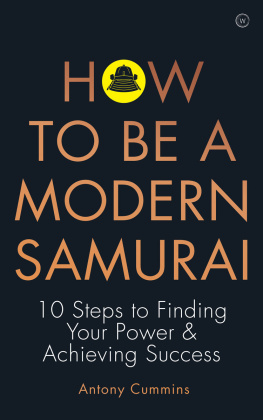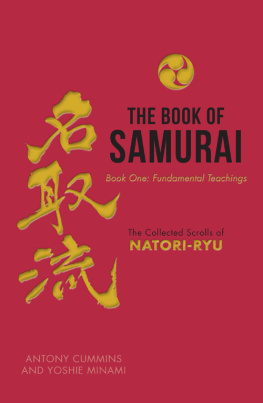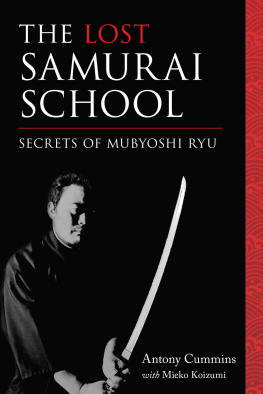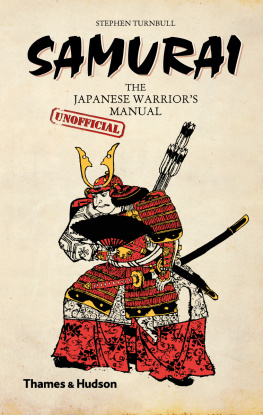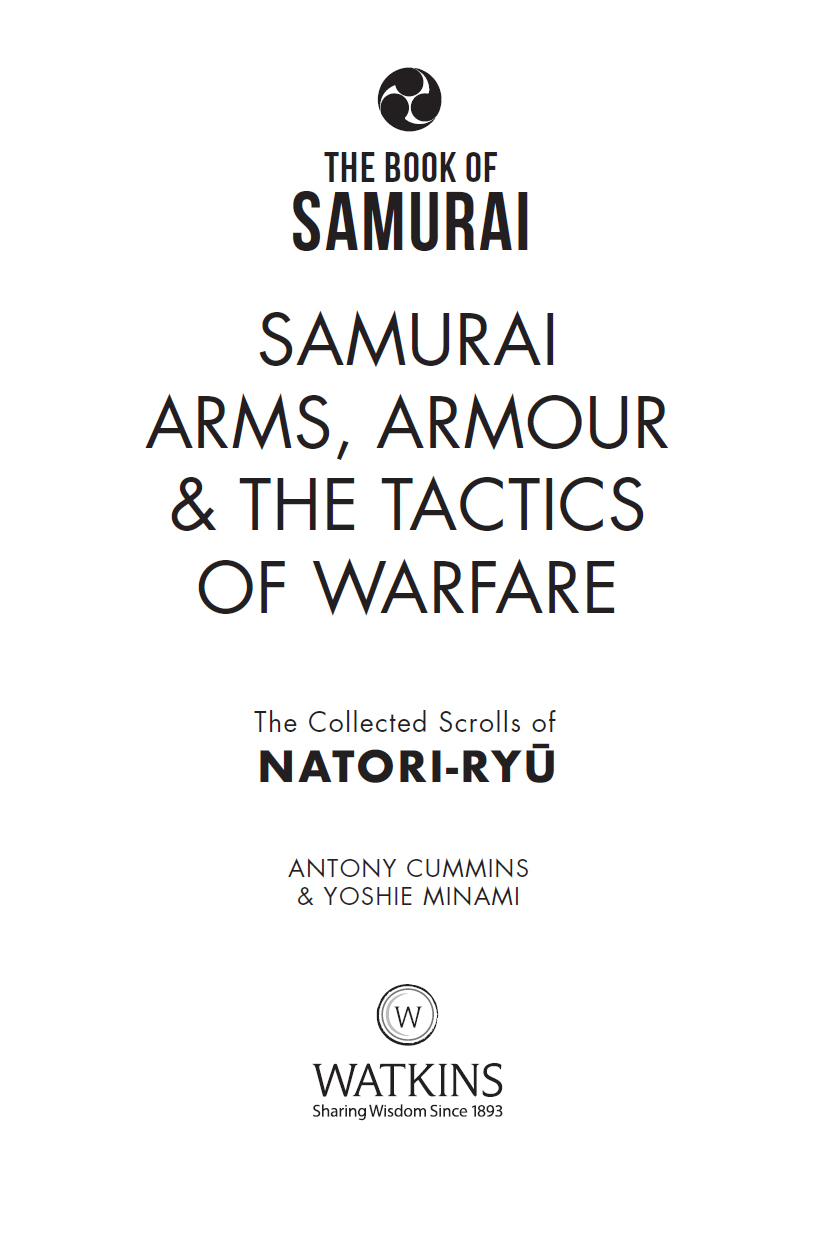Antony Cummins is an author and a historical researcher, as well as leading the resurrection of the samurai school of war Natori-Ry. He concentrates on investigating and disseminating the history of the Japanese shinobi. As project manager with the Historical Ninjutsu Research Team, Antony has overseen the translation and publication of multiple shinobi and samurai manuals, including: The Book of Ninja, The Book of Samurai: Fundamental Samurai Teachings, Iga and Koka Ninja Skills, The Secret Traditions of the Shinobi, True Path of the Ninja, The Lost Samurai School and Samurai War Stories. Antony has also published his own writing: two books on the samurai and shinobi, In Search of the Ninja and Samurai and Ninja; and a look at the darker side of Japanese folklore called The Dark Side of Japan. He has appeared in the TV documentaries Samurai Headhunters, Ninja Shadow Warriors, Samurai Warrior Queens, The 47 Ronin and Ninja. For more information about Antony and his team, see his website: www.natori.co.uk.
Yoshie Minami was born in Tokyo and currently lives in Saitama, Japan. She has a BA degree in Linguistics from the International Christian University. As a translator, she has worked alongside Antony Cummins to publish the following books: True Path of the Ninja, The Secret Traditions of the Shinobi, Iga and Koka Ninja Skills, Samurai War Stories, The Book of Ninja and The Book of Samurai series.
This edition first published in the UK and USA 2018 by
Watkins, an imprint of Watkins Media Limited
19 Cecil Court
London WC2N 4EZ
Design and typography copyright Watkins Media Limited 2018
Text copyright Antony Cummins 2018
Illustrations copyright Antony Cummins 2018
Antony Cummins has asserted his right under the Copyright, Designs and Patents Act 1988 to be identified as the author of this work.
All rights reserved.
No part of this book may be reproduced or utilized in any form or by any means, electronic or mechanical, without prior permission in writing from the Publishers.
10 9 8 7 6 5 4 3 2 1
Designed and typeset by JCS Publishing Services Ltd
Illustrations by Jay Kane, Vangelis Drosos and Andrija Dreznjak
Calligraphy by Yamamoto Jyuho
Special thanks to Taiji Mizushima for his assistance with historical
Japanese castles
Printed and bound in the United Kingdom
A CIP record for this book is available from the British Library
ISBN: 978-1-78678-173-4
www.watkinspublishing.com
CONTENTS
Heieki Yh
Important Ways On Military Duties
Heigu Yh
Important Ways On Military Tools
AN INTRODUCTION TO NATORI-RYU
LISTENING TO THE SAMURAI
This book was written by the seventeenth-century samurai tactician Natori Sanjr Masazumi, also known as Issui-sensei, who was to become the most influential grandmaster of the Natori-Ry school of war. It gives us an unprecedented insight into what the samurai knew about their own specialization armour and warfare. By listening to a genuine samurai, we can discover a huge amount about the thoughts, ideals, codes and even the feelings of this much admired, but often misunderstood, warrior class.
In 1654 Issui-sensei began his service under the Kish-Tokugawa clan. This was a time when Japan had just come out of a long period of wars. Being born into the generation of children and grandchildren of experienced samurai from the age of wars, he was surrounded by peers of a much older age who had seen the great wars at first hand. Although these veterans would have passed on their knowledge directly to their sons, a lack of wars in which to put this learning into practice led to a decline in tactical and military prowess. This was the context in which Issui-sensei set about collecting a vast array of samurai arts, expanding his family traditions to create one of the most comprehensive warfare schools of his time.
The result of his tireless efforts is an outstanding record of samurai ways, from the earliest samurai times to his day. It allows us to trace the considerableevolution in armour, weapons and tactics over that period. We also discover that some of the misconceptions that are prevalent today had their origins in mistakes already being made by the samurai of the seventeenth century in interpreting earlier teachings. Through Issui-senseis hard work, we are now able to correct these misunderstandings.
This book will show you the evolution of the first sets of great armour from the days of mounted combat and horse archery all the way through to the middle period of the samurai. By this time armour had become more compact to adapt to the new way of grand armies of soldiers on foot on the field of battle. Although their armour may have changed, the samurai still revered the armour and exploits of the warriors of old, as we discover from numerous references in Issui-senseis writings. He also tells us how samurai armour related to the timeless truths of Japanese mythology and cosmology. Armour carried representations of sacred boundaries, which connected the wearer to the pantheon of deities, and was designed and assembled with consideration for the wonderful interplay between yin and yang and the Five Elements. As such, a samurais armour was a map of his spiritual power and an item of prestige to be gazed upon.
ABOUT THE BOOK OF SAMURAI SERIES
Each book in The Book of Samurai series focuses on a specific aspect of historical samurai warfare. This volume deals with arms, armour and the tactics of warfare.
The first book in the series, The Book of Samurai: Fundamental Samurai Teachings, contained a translation of two scrolls:
1. Heika Jdan Discussions on samurai families
2. Ippei Yk Important points for the independent soldier
This volume, the second book in the series, continues with another two scrolls:
1. Heieki Yh Important ways on military duties
2. Heigu Yh Important ways on military tools
The full multi-volume collection represents the whole curriculum of the samurai school of war known as Natori-Ry (also known as Shin-Kusunoki-Ry or Kusunoki-Ry). The school is officially and historically listed as a gungaku school. Meaning military studies, gungaku represents the collation of various structured teachings under one system with the aim of preserving and continuing historically accurate samurai ways. This makes Natori-Ry an important cultural asset for understanding traditional Japanese ways and gives a reliable insight into the complex world of the samurai.
THE SCROLLS USED IN THIS VOLUME
Heieki Yh, the first scroll translated in this book, is divided into two parts: Ken and Kon. The first part (Ken) establishes the military command structure of a samurai army and the role that the leader plays. It goes on to give advice for a commander on a battlefield, including tactics to be used and lessons for specific scenarios. The second part (Kon) deals with the various positions within a samurai army and explains each role and its associated teachings, thereby painting a clear picture of the Japanese military machine at war.
Next page
